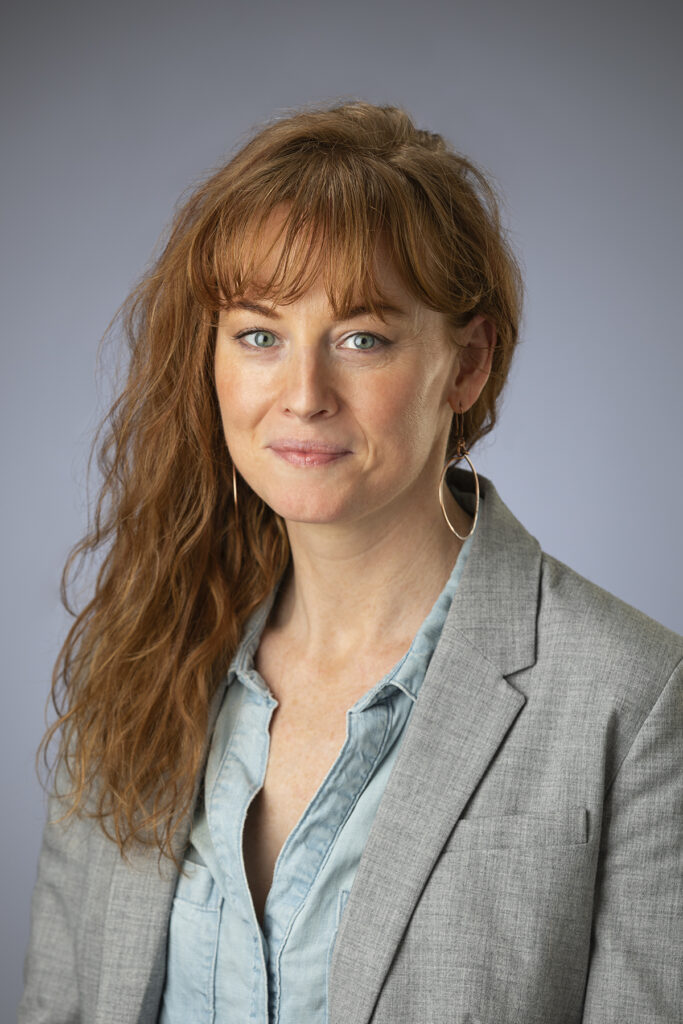ASLE’s Scholar of the Month for June 2021 is April Anson.
 Dr. April Anson is an Assistant Professor of Public Humanities at San Diego State University, where she writes and teaches at the intersection of the environmental humanities and American studies, paying particular attention to Indigenous studies and political theory. Her work has appeared or is forthcoming in boundary 2, Resilience, Environmental History, Western American Literature, and others.
Dr. April Anson is an Assistant Professor of Public Humanities at San Diego State University, where she writes and teaches at the intersection of the environmental humanities and American studies, paying particular attention to Indigenous studies and political theory. Her work has appeared or is forthcoming in boundary 2, Resilience, Environmental History, Western American Literature, and others.
How did you become interested in studying ecocriticism and/or the environmental humanities?
After teaching high school English and running what we called Earth Club for years, I decided to go back to pursue a Master’s in English. At the time, I was ambivalent about PhD programs but, as I was choosing classes for my second term, I saw “Ecocriticism” and enrolled immediately. That survey course was taught by Dr. Greg Jacobs, who patiently and generously reminded me that I could combine my passions for environmental issues, literary methodologies, and political theory to pursue the dissertation-sized questions that I was trying to squeeze into a term paper. I was hooked.
Who is your favorite environmental artist, writer, or filmmaker? Or what is your favorite environmental text? Why?
It is impossible to choose favorites, so I will just say that the last creative work to absolutely level me has been Kumeyaay Tommy Pico’s Nature Poem, a reclamation of the queer Native presence floating in the form through an unflinching critique of the relationship between whiteness, environmental devastation, and staid nature-poem conventions. So, too, Chamorro Craig Santos Perez’s Habitat Threshold, especially the poem “Love in a Time of Climate Change,” which includes the searing lines: “I love you like this because we’ll only survive/ in the nitrogen rich compost of our embrace,/ so close that your emissions of carbon are mine,/ so close that your sea rises with my heat.” The work powerfully integrates so much current thinking in the environmental humanities, which makes it great for the classroom.
In terms of environmental texts, I’ve been getting a lot out of The Red Nation’s The Red Deal: Indigenous Action to Save Our Earth, which begins “There is something about the weather” and proceeds to offer pragmatic steps to support and strengthen movements against colonial and corporate extraction. I’ve also been inspired by Arundhati Roy’s Azadi: Freedom. Fascism. Fiction., a collection of essays – including her viral “The Pandemic is a Portal” – which connect environmental issues to the global rise of authoritarianism and asks what the word Azadi, or freedom with responsibility, means for us all.
What are you currently working on?
I am currently revising my dissertation into my first monograph, tentatively titled Unfenceable: Race, Nature, Genre, and the Sovereignties that Can Save Us. Unfenceable theorizes the historical and ongoing relationship between white supremacy, American environmental thought, and literary genre. Specifically, it traces a tradition of American ecofascism that gets embedded in nineteenth-century environmental texts through the genres of the gothic, allegory, and apocalypse, generic patterns of white supremacy which continue to constrain our imaginations of climate change. As a counter archive, I explore an early Indigenous environmental justice tradition that both precedes and exceed those pale-plots, modeling version of the genres vital for climate action today, narrative and political.
What is something you are reading right now (environmental humanities-related or otherwise) that inspires you, either personally or professionally? Comment briefly on why or how it inspires you.
My dear friend Genevieve Hudson’s novel The Boys of Alabama is a rich exploration of southern masculinity, ritual, and the power of belief that, combined with its brilliant but subtle invocations of climate change, illuminate some of the most persistent cultural barriers to real environmental change.
Is there a scholar in the field who inspires you? Why?
There are so many folks doing incredible work. I am particularly inspired by my colleague at San Diego State University, Dr. Esme Murdock, who manages to write and speak in that magic place where incisive critique and expansive vision coexist, and she does it with such fierce and generous grace.
